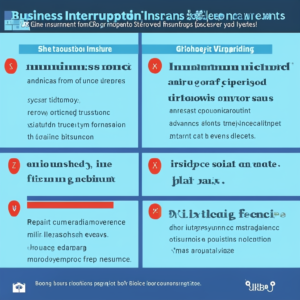Introduction
In today’s competitive job market, attracting and retaining top talent has become a paramount challenge for organizations across various industries. While salary remains a significant factor in job selection, employee benefits insurance has emerged as a crucial element that can make or break a candidate’s decision to join a company. As job seekers increasingly prioritize comprehensive and creative benefits packages, employers must adapt to these changing expectations to stand out. This blog post will delve into the world of employee benefits insurance, exploring innovative packages that not only meet the needs of employees but also enhance a company’s appeal in the eyes of potential hires.
Understanding Employee Benefits Insurance
Definition and Importance of Employee Benefits Insurance
Employee benefits insurance is a crucial component of a comprehensive compensation package that organizations offer to their employees. It encompasses various types of insurance coverage designed to protect employees and their families from financial hardships due to unforeseen circumstances. The importance of employee benefits insurance cannot be overstated, as it plays a significant role in attracting and retaining top talent in a competitive job market.
In essence, employee benefits insurance serves as a safety net, providing financial security and peace of mind to employees. It covers a range of essential services, including medical care, dental and vision services, life insurance, and disability coverage. By offering these benefits, employers demonstrate their commitment to the well-being of their workforce, fostering a positive workplace culture and enhancing employee satisfaction.
Employee benefits insurance is not just a perk; it is often a legal requirement in many jurisdictions. For instance, the Affordable Care Act mandates that larger employers provide health insurance to their employees. Failure to comply with such regulations can result in significant penalties, making it imperative for businesses to understand and implement appropriate employee benefits insurance plans.
In addition to compliance and employee satisfaction, offering robust benefits can lead to increased productivity and reduced turnover rates. Employees who feel valued and secure in their roles are more likely to be engaged and motivated, ultimately benefiting the organization as a whole. Therefore, understanding employee benefits insurance is essential for both employers and employees, as it lays the foundation for a healthy and productive work environment.
Types of Employee Benefits Insurance
Employee benefits insurance encompasses a variety of coverage options, each designed to address specific needs and circumstances. Understanding the different types of employee benefits insurance is essential for both employers and employees to make informed decisions about their coverage options.
Health Insurance
Health insurance is perhaps the most critical type of employee benefits insurance. It provides coverage for medical expenses, including doctor visits, hospital stays, surgeries, and prescription medications. Employers typically offer several health insurance plans, allowing employees to choose the one that best fits their needs and budget. By providing health insurance, employers not only comply with legal requirements but also promote a healthier workforce, which can lead to lower absenteeism and increased productivity.
Dental and Vision Insurance
Dental and vision insurance are often offered as supplemental benefits to health insurance. Dental insurance covers routine check-ups, cleanings, and necessary procedures such as fillings and extractions. Vision insurance typically includes coverage for eye exams, glasses, and contact lenses. These benefits are essential for maintaining overall health and well-being, as oral and visual health are closely linked to general health outcomes. By offering dental and vision insurance, employers can further enhance their benefits package and support their employees’ health needs.
Life and Disability Insurance
Life and disability insurance are critical components of employee benefits insurance that provide financial protection in the event of unforeseen circumstances. Life insurance offers a death benefit to the beneficiaries of an employee, ensuring financial stability for their loved ones. Disability insurance, on the other hand, provides income replacement if an employee is unable to work due to illness or injury. These types of insurance are vital for safeguarding employees’ financial futures and providing peace of mind.
Supplemental Insurance Options
Supplemental insurance options, such as critical illness insurance, accident insurance, and hospital indemnity insurance, offer additional layers of protection for employees. These policies can help cover out-of-pocket expenses that may not be fully addressed by primary health insurance. By providing supplemental insurance options, employers can give employees the flexibility to customize their benefits package according to their individual needs and circumstances, further enhancing job satisfaction and loyalty.
Understanding the various types of employee benefits insurance is essential for both employers and employees. By offering a comprehensive benefits package, organizations can attract and retain top talent while ensuring the well-being of their workforce.
The Role of Employee Benefits in Attracting Talent
Current Trends in Employee Expectations
In today’s competitive job market, employee expectations have evolved significantly, with many candidates prioritizing comprehensive benefits packages alongside salary. Current trends indicate that job seekers are increasingly looking for employers who offer not just competitive pay, but also a range of benefits that support their overall well-being. This shift is largely driven by a growing awareness of the importance of work-life balance, mental health, and financial security.
One notable trend is the demand for flexible work arrangements, including remote work options and flexible hours. Employees are seeking benefits that accommodate their lifestyles and personal commitments, allowing them to maintain a healthy balance between work and home life. Additionally, there is a rising expectation for mental health support, with many candidates looking for employers who provide access to counseling services, wellness programs, and mental health days.
Another trend is the increasing importance of diversity, equity, and inclusion (DEI) in the workplace. Employees are more likely to be attracted to companies that demonstrate a commitment to DEI through their benefits offerings. This includes providing benefits that cater to diverse needs, such as parental leave policies, support for caregivers, and health insurance that covers a wide range of medical services.
Candidates are increasingly interested in benefits that promote financial wellness, such as retirement savings plans, student loan repayment assistance, and financial planning resources. As the cost of living continues to rise, employees are looking for employers who can help them achieve financial stability and security.
Current trends in employee expectations highlight the importance of offering a diverse and comprehensive benefits package that addresses the evolving needs of the workforce. Employers who stay attuned to these trends are better positioned to attract top talent and create a positive workplace culture.
The Impact of Benefits on Employee Satisfaction and Retention
Employee benefits play a pivotal role in shaping overall job satisfaction and retention rates within an organization. When employees feel that their needs are being met through a robust benefits package, they are more likely to be satisfied with their jobs and remain loyal to their employer. Research consistently shows that employees who are satisfied with their benefits are more engaged, productive, and committed to their organization.
One of the key ways benefits impact employee satisfaction is by providing a sense of security. Health insurance, retirement plans, and life insurance contribute to employees’ peace of mind, knowing that they and their families are protected against unforeseen circumstances. This security fosters a positive work environment where employees can focus on their tasks without the constant worry of financial instability.
Benefits that promote work-life balance, such as flexible schedules and paid time off, significantly enhance employee satisfaction. When employees feel that their employer values their personal time and well-being, they are more likely to be motivated and engaged in their work. This, in turn, leads to higher productivity levels and a more harmonious workplace culture.
Retention is another critical aspect influenced by employee benefits. Organizations that offer competitive and comprehensive benefits packages are more likely to retain their top talent. High turnover rates can be costly for businesses, leading to increased recruitment and training expenses. By investing in employee benefits, companies can reduce turnover and foster a loyal workforce.
Benefits that support professional development, such as tuition reimbursement and training programs, can enhance employee retention. When employees see that their employer is invested in their growth and career advancement, they are more likely to stay with the company long-term.
The impact of employee benefits on satisfaction and retention is profound. By offering a well-rounded benefits package, organizations can create a positive work environment that fosters loyalty, engagement, and productivity among their employees.
How Benefits Can Differentiate a Company in a Competitive Market
In a competitive job market, companies must find ways to stand out and attract top talent. One of the most effective strategies for differentiation is through a comprehensive and innovative employee benefits package. While salary is undoubtedly important, benefits can be a key factor that sets a company apart from its competitors.
A unique benefits package can highlight a company’s commitment to employee well-being and satisfaction. For instance, offering benefits such as unlimited paid time off, wellness programs, or mental health resources can demonstrate that a company values its employees’ health and work-life balance. This not only attracts candidates who prioritize these aspects but also enhances the company’s reputation as an employer of choice.
companies that provide personalized benefits options can further differentiate themselves. Allowing employees to customize their benefits based on their individual needs and circumstances can create a sense of ownership and satisfaction. For example, offering a range of health insurance plans, retirement savings options, and wellness initiatives allows employees to choose what works best for them, making the company more appealing to a diverse workforce.
Companies that embrace innovative benefits, such as student loan repayment assistance or pet insurance, can capture the attention of younger generations entering the workforce. These unique offerings resonate with the values and priorities of millennials and Gen Z, who often seek employers that align with their lifestyle and aspirations.
Creative Employee Benefits Insurance Packages
Customizable Health Insurance Plans
In an era where personalization is key, customizable health insurance plans have emerged as a popular option for employers looking to meet the diverse needs of their workforce. These plans allow employees to tailor their health coverage according to their individual circumstances, preferences, and financial situations.
Flexible Spending Accounts (FSAs) and Health Savings Accounts (HSAs)
Flexible Spending Accounts (FSAs) and Health Savings Accounts (HSAs) are two innovative options that enhance the flexibility of health insurance plans. FSAs allow employees to set aside pre-tax dollars for eligible medical expenses, such as copayments, deductibles, and certain over-the-counter medications. This not only reduces taxable income but also empowers employees to manage their healthcare costs more effectively.
Health Savings Accounts (HSAs), on the other hand, are designed for individuals enrolled in high-deductible health plans (HDHPs). HSAs offer triple tax advantages: contributions are tax-deductible, growth is tax-free, and withdrawals for qualified medical expenses are also tax-free. This makes HSAs an attractive option for employees looking to save for future healthcare costs while enjoying immediate tax benefits.

Telehealth Services
Telehealth services have gained immense popularity, especially in the wake of the COVID-19 pandemic. By offering telehealth options as part of health insurance plans, employers can provide employees with convenient access to healthcare professionals without the need for in-person visits. This not only saves time but also reduces the barriers to seeking medical care, ultimately leading to better health outcomes. Telehealth services can include virtual consultations, mental health support, and even remote monitoring for chronic conditions, making it a versatile addition to customizable health insurance packages.
Wellness Programs
Wellness programs are increasingly recognized as a vital component of employee benefits packages, promoting overall health and well-being among employees. These programs not only enhance employee satisfaction but also contribute to a healthier workforce, reducing healthcare costs for employers in the long run.
Mental Health Support
Mental health support is a critical aspect of wellness programs. Employers can offer resources such as Employee Assistance Programs (EAPs), which provide confidential counseling services for employees facing personal or work-related challenges. Additionally, workshops and seminars focused on stress management, resilience, and mindfulness can equip employees with valuable tools to navigate their mental health. By prioritizing mental health, companies demonstrate their commitment to the holistic well-being of their workforce, fostering a supportive and inclusive workplace culture.
Fitness Memberships and Incentives
Incorporating fitness memberships and incentives into wellness programs can further encourage employees to prioritize their physical health. Employers can partner with local gyms or fitness centers to offer discounted memberships or reimburse employees for fitness-related expenses. Additionally, implementing wellness challenges or providing incentives for achieving fitness goals can motivate employees to engage in regular physical activity. These initiatives not only promote healthier lifestyles but also enhance team bonding and camaraderie among employees.
Family-Oriented Benefits
Family-oriented benefits are essential for supporting employees with families and fostering a family-friendly workplace culture. By offering benefits that cater to the needs of employees’ families, companies can enhance employee satisfaction and loyalty.
Parental Leave Policies
Comprehensive parental leave policies are a crucial aspect of family-oriented benefits. Employers can offer paid maternity and paternity leave, allowing new parents to bond with their children without the stress of financial instability. Additionally, providing flexible return-to-work options, such as phased returns or remote work arrangements, can ease the transition for new parents. By prioritizing parental leave, companies demonstrate their commitment to supporting employees during significant life events.
Childcare Assistance
Childcare assistance is another valuable family-oriented benefit. Employers can offer on-site childcare facilities, subsidies for childcare expenses, or partnerships with local childcare providers. This support alleviates the burden of childcare costs and logistics, allowing employees to focus on their work without the constant worry of finding reliable care for their children. By investing in childcare assistance, companies can attract and retain talent, particularly among working parents.
Unique Insurance Offerings
In a competitive job market, unique insurance offerings can set a company apart and attract top talent. These innovative benefits cater to the diverse needs of employees and demonstrate a commitment to their overall well-being.
Pet Insurance
Pet insurance is an increasingly popular benefit that resonates with pet owners. By offering pet insurance as part of the benefits package, employers can provide employees with peace of mind regarding their furry family members’ health. This unique offering not only enhances employee satisfaction but also fosters a sense of loyalty among pet-loving employees, making the company more appealing to a broader audience.
Student Loan Repayment Assistance
With student loan debt at an all-time high, student loan repayment assistance has emerged as a valuable benefit for younger employees. Companies can offer programs that help employees pay down their student loans, either through direct contributions or matching programs. This support not only alleviates financial stress but also positions the employer
FAQs
Q: What are some unique employee benefits that can attract top talent?
A: Unique benefits include flexible work hours, mental health support, wellness programs, and professional development opportunities.
Q: Why is health insurance important in employee benefits packages?
A: Health insurance is a fundamental part of employee benefits as it ensures employees have access to necessary medical care, promoting overall well-being and productivity.
Q: How can flexible work arrangements benefit both employees and employers?
A: Flexible work arrangements, such as remote work and flexible hours, enhance employee satisfaction and retention while reducing overhead costs for employers.
Q: What role do wellness programs play in employee benefits?
A: Wellness programs encourage healthy lifestyles, reduce absenteeism, and can lead to significant cost savings for employers through lower healthcare expenses.
Q: How does offering student loan assistance help attract talent?
A: Student loan assistance addresses a major financial burden for many employees, making the employer more attractive to recent graduates and those with student debt.
Q: Why is parental leave an essential benefit for attracting talent?
A: Generous parental leave policies demonstrate an employer’s commitment to work-life balance, appealing to young professionals looking to start families.
Conclusion
In conclusion, the landscape of employee benefits insurance is evolving, and organizations that embrace creativity in their offerings will be better positioned to attract and retain top talent. By understanding the diverse needs of their workforce and implementing innovative benefits packages, employers can create a supportive and engaging work environment that fosters loyalty and satisfaction. As the competition for skilled professionals intensifies, investing in unique employee benefits is not just a trend; it’s a strategic move that can lead to long-term success for both employees and employers alike.




